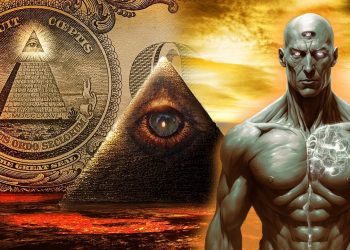The symbolism of the snake is one of the most complex and commonly seen images in world mythology. It is characterized by pronounced polyvalence. It contains both the masculine and the feminine, and since it represents both genders, it is an emblem of all self-generating deities. On the one hand, the snake is a phallic symbol, the fertilizing male force, the “husband of all women,” it is no coincidence that its presence in almost every folklore means pregnancy. As we know, marriage between a female and a male is a life-giving act of nature. Therefore, it is no coincidence that the symbol of marriage between an earthly woman and a dragon or a serpent is characteristic of mythology worldwide.
The symbolism is rooted in history
Usually, the woman from the myth is at an age when she is ripe for marriage and is associated with all those mysteries that make a woman look especially secretive and respectable creature in the eyes of the ancient man – menstruation, conception, and birth. The woman has always been perceived as mystical and divine because of her ability to give life. In this capacity, she is often compared to the Creator. Thus, if a woman symbolizes the connection with the earth, fertility, and the creative power of nature, then the symbolism of the snake, in this case, is a stable illustration of the male fertilizing power and the phallus.
Its many connections
Its connection with water, the seed, the liquid from which life was born, also refers us to this. On the other hand, the symbolism of the snake is also closely related to the female aspect. She often accompanies the female deities or symbolizes the Earth, its darkness, moisture, and the fruitful forces hidden in it. In this aspect, it is also the bearer of typically feminine features such as secrecy, mystery, and intuition. Several folklore stories present the snake as a skilled and wise animal that understands the power of herbs and the mysteries of healing practices.
The classic image of two intertwined snakes, an emblem of the modern pharmaceutical profession, preserves snakes as guardians of the waters from the depths, which flow like juice into the health-giving plants. That is, their fertility is again underlying. On the one hand, the Serpent and all its manifestations are charged with the idea of death, destruction, and chaos. Still, on the other hand, its ability to change its skin presupposes resurrection and renewal, so the Serpent or dragon has become the primary motive for the cycle of life, eternity.
Representing an analogy
The same analogy of death and resurrection the ancients found in the rising and waning moon in the night sky, in the three aggregate states of water, in the change of seasons, in the growth of plants, and in the cycles of nature. It is no coincidence that the snake, the moon, the groundwater, and the phallus are all symbols present mostly with crops – those whose lives depend directly on the earth and its life force. (Arthur Versluis, 1992)
What it means in Cosmogonic terms
In cosmogonic terms, the symbolism of the snake and the symbolism of water are connected with the primary chaos, the primordial matter, and life in its unbridled, undifferentiated, and chaotic aspect. Water is a symbol of potential creative energy and life spirit. The primary chaos was the imbalance from which life sprouted and created order. The imbalance, the ancient man convinces us, must exist because just as light casts a shadow on the objects against which it shines, so the divine separates from itself to open space in space and create disharmony. Disharmony is an inverse reflection of transcendental light. Its enemy is the Sun and all solar and spiritual forces.
Have something to add? Visit Curiosmos on Facebook. Join the discussion in our mobile Telegram group











